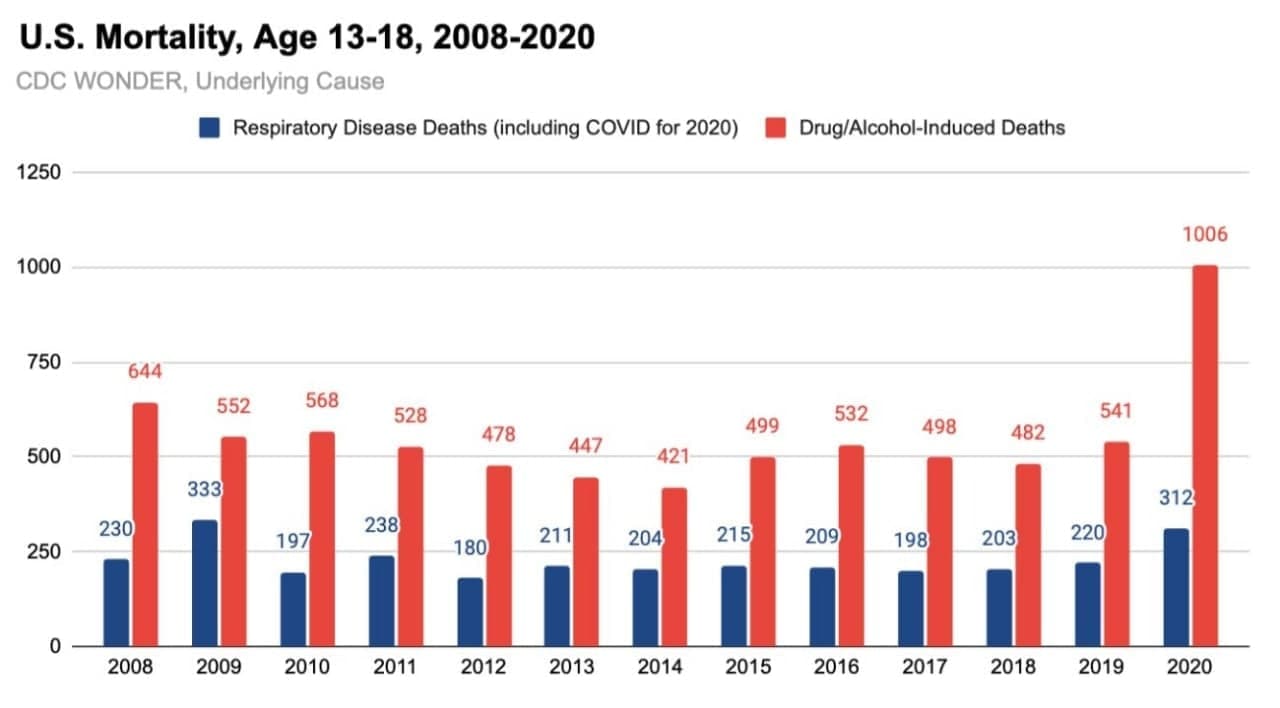Lockdowns create an ideal environment to exacerbate substance abuse. Stress, depression, isolation, unemployment, domestic conflict, lack of a structured routine, lack of social support, and lack of access to treatment are consequences of lockdowns which essentially mirror the factors that increase drug and alcohol abuse. People who suffer from a substance use disorder are faced with a tsunami of pressures to increase or resume using, all while being unable to see a counselor or attend an AA meeting to help them through.
A number of studies demonstrate the influence of lockdowns on substance use. Sales of alcohol are not a good indicator because with bars closed, there is no social drinking, which is less associated with health and social problems. Liquor store sales went up during the lockdown, but part of the reason for that could be hoarding. Surveys on alcohol and drug use and the number of people seeking treatment are better indicators of problem use. However, it should be noted that researchers believe that survey respondents consistently under-report alcohol consumption in the order of 40-60%.
A survey by UK’s Office for National Statistics found that 20% of people that drink alcohol daily have increased their consumption. Australia National University also found that 20% of respondents have been drinking more alcohol since the break of lockdown. The Canadian Centre of Substance Abuse and Addiction discovered that 25% of people aged 35 to 54 have been drinking more.
Percentage of People Drinking More Alcohol
UK
Australia
Canada
USA
The increase in consumption may last longer than the lockdown considering the trauma that the situation has caused. After the 9/11 terrorist attack in New York, alcohol consumption in the city went up 25% in the following weeks. 9 months later, 17% of New Yorkers were still drinking more. Lockdowns may be creating or exacerbating long-term alcohol problems in a significant portion of the population.
Sustained heavy consumption of alcohol is related to numerous health problems including heart disease, liver disease, and digestive disorders. A massive study of 599,912 subjects published in The Lancet found that alcohol consumption had a significant effect on life expectancy. It concluded that consuming 2 drinks per day decreased life expectancy by 1-2 years, and 3.7 drinks per day decreased life expectancy by 4-5 years. Alcohol consumption also increases unemployment, relationship problems, violence, and injuries, among other unwanted consequences.
The impact of lockdowns on illegal drug use is not yet well understood. Lockdowns create the same conditions that increase use as seen with alcohol, although the drug trade has been impaired by lockdown restrictions. There have been fewer studies on the effect of lockdowns on drugs as there have been with alcohol. Surveys on illicit drug use during lockdowns have generally reported that some people have increased their use while others have reduced it. A national UK study found that 39% of people recovering from an addiction — roughly one million Brits — had a relapse during the lockdown.
A consistent finding is that there has been a reduction in the amount of desired recreational drugs on the market. This would appear to be a positive development, however, the reality is that the “shortage” of recreational opioids has caused an increase in overdoses, both fatal and non-fatal.
This paradox has two major processes: substitution of narcotics with more toxic synthetic substances, and users buying whatever drugs they are able to acquire without understanding their dosages. Fatality rates of overdoses have likely risen during lockdown due to the fact that people are using drugs alone so there is no one to call for an ambulance.
British Columbia, Canada, for instance, has had an increase in overdose deaths from 73 in February 2020 (the 6th consecutive month with under 80 deaths/month) to over 170 deaths for each of May and June. In contrast to COVID-19, each death from drug overdose is a life cut short by a few decades. In 2020, the province had 1,716 overdose deaths, 74% more than the year before. In Alberta, overdose deaths almost doubled in 2020: 1,128, compared to 627 in 2019. In March 2021, Alberta introduced an app to help people using drugs at home get medical attention by automatically sending an ambulance to their residence if the user doesn’t tell the app that he is okay before a timer runs out. Drug overdoses are more fatal now that people increasingly use drugs alone and there is no one to call them an ambulance in case of overdose. One of the many ways that social distancing kills.

Teen respiratory deaths somewhat higher than normal in 2020, probably due to the crushing effects of social distancing on the immune system. Drug and alcohol deaths doubled.
Should alcohol be banned?
Street drugs are already illegal, but why not ban alcohol during the lockdown? It seems like the logical solution to prevent problem drinking. Very few states in lockdown have taken this step. Banning the sale of alcohol would probably decrease consumption, but it would also create a host of other very serious issues.
As seen in the United States in the 1920s, banning alcohol encourages a large black market to develop. Controlling organized crime could be a major burden on the police. Another reason that alcohol was not banned in lockdowns is that people can find alcohol from other sources. Those dependent on the substance can make their own, or consume unsafe sources of alcohol such as hand sanitizer or rubbing alcohol. As seen from the state of Pennsylvania closing alcohol stores during the lockdown, people desperate for booze will travel to neighboring states to buy it, going against the purpose of the lockdown.
Withdrawal is another reason why alcohol bans may be ill advised. Sudden withdrawal from alcohol can cause serious side effects such as seizures, confusion, and occasionally, death. People who experience alcohol withdrawal symptoms often require medical care, and hospitals want to keep as many beds free as possible in case there is a spike in COVID admissions.

